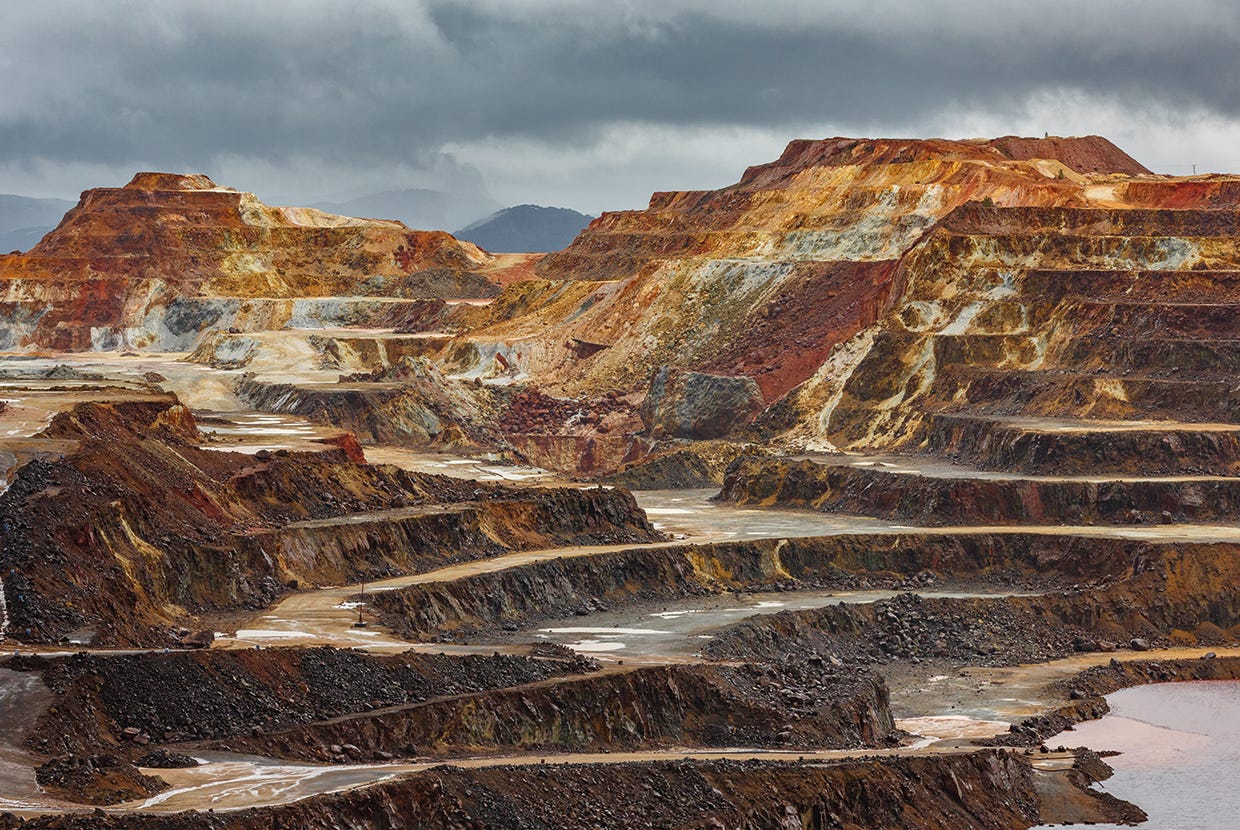🔋Material World
There’s no need to look too hard for bipartisan policies in 2025.
If you found this article interesting, click the like button for me! I would greatly appreciate it :)
Critical materials have been a hot topic since 2020 supply chain disruptions and 2021 energy transition hopes. Both Biden and now Trump have made these strategic resources a top priority. Trump and Biden’s categories of importance surely differ, but the resulting emphasis is similar. During Biden’s term, the Department of Energy defined critical materials as battery metals, platinum, rare earths, and more. This time, Trump has added copper, uranium, gold, and potash.
Trump has signed an executive order (surprise, surprise) to use the Defense Production Act (DPA) to increase the domestic production of critical materials. Biden used the same legislation during his term for battery materials, which I wrote about here. This act which originated as a war-time centralization of power, has been increasingly called upon for less “war-time” type efforts.
The act has been used to regulate heavy industry for the Korean war, establish and distribute domestic industries across the US to avoid devastation from nuclear attack during the Cold War, funding the trans-Alaskan pipeline and research into liquefied natural gas, development and mining contracts for innovative technologies such as semiconductors and rare-earth metals, compel companies to detail foreign hardware to combat cyberespionage (Obama), development of aerospace and electronics materials (Trump), compel production, block exports, and control price of health and medical resources during COVID-19 (Trump), compel meat industries to remain open during COVID-19 (Trump), increase production of pandemic related supplies (Biden), and supply equipment to Merck facilities to produce Johnson and Johnson vaccines (Biden), and ensure fire hoses for wild-fires (Biden).
While the DPA is the free market’s worst nightmare, Trump says he wants to boost the domestic economy since many industries have shifted overseas. This political mandate comes as China has secured a stranglehold on many key resources like battery materials, rare earth minerals, and manufacturing. On the other hand, Russia has the lead in Uranium processing, which is essential for nuclear reactors that represent 20% of the US energy mix as well as future nuclear technology.
Russia and China have accumulated leads in many strategic materials and have now caught the eye of US leaders as a potential problem. The Russia/Ukraine war is getting long in the tooth after nearly 3 years, and there are negotiations to try to end it. To facilitate peace, Ukraine may have to agree to a mineral deal with the US, details of which are still unknown. Nothing is for sure until it is signed, but this eastern European conflict is a top political priority right now
Interestingly, the Congo heard about the US foreign objectives in Ukraine and wants a piece of the pie themselves. Dealing with border conflicts themselves, the Congo wants to give mineral rights to the US in exchange for some type of protection or to move away from their Chinese connections. The African nation is the world’s second-largest copper producer and largest cobalt producer. They also have vast amounts of lithium, tantalum, tin, and gold.
Gold is often a quiet yellow rock but has been important lately. Gold has crossed new price highs of $3000/oz, and physical gold inventories have been shrinking. Russia and China have been stacking gold behind the scenes for years, likely holding much more than publicly advertised. This and Trump’s debt concerns could be reasons for inquiries into gold inventories at Fort Knox. Further, Tariff concerns have caused price arbitrage and significant flows of gold have been brought back from the UK. This is ironically the reason for that shocking negative GDPNow estimate that makes the economy look weak even though it isn’t (yet).
All these strategic materials have one theme in common: Russia/China influence. Trump has probably been informed of the East’s accumulation of Gold, which is why Gold has been added to the list. Copper, battery materials, rare earths, gold, uranium, and more have all been neglected by the US for decades. Only now has the government decided to do something. It will provide significant funds to these sectors, boosting demand and bifurcate supply chains, reducing available supply. This could provide an upward influence on commodity prices unless economic growth slows significantly. Until next week,
-Grayson
Leave a like and let me know what you think!
If you haven’t already, follow me at TwitterX @graysonhoteling and check out my latest post on notes.
Socials
Twitter/X - @graysonhoteling
LinkedIn - Grayson Hoteling
Archive - The Gray Area
Let someone know about The Gray Area and spread the word!
Thanks for reading The Gray Area! Subscribe for free to receive new posts and support my work.




